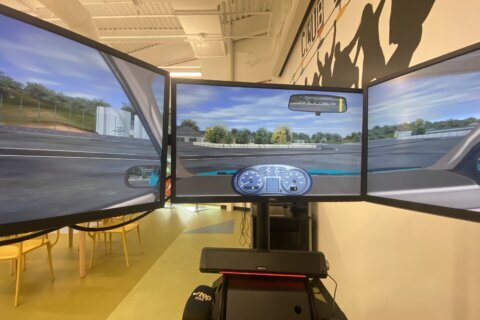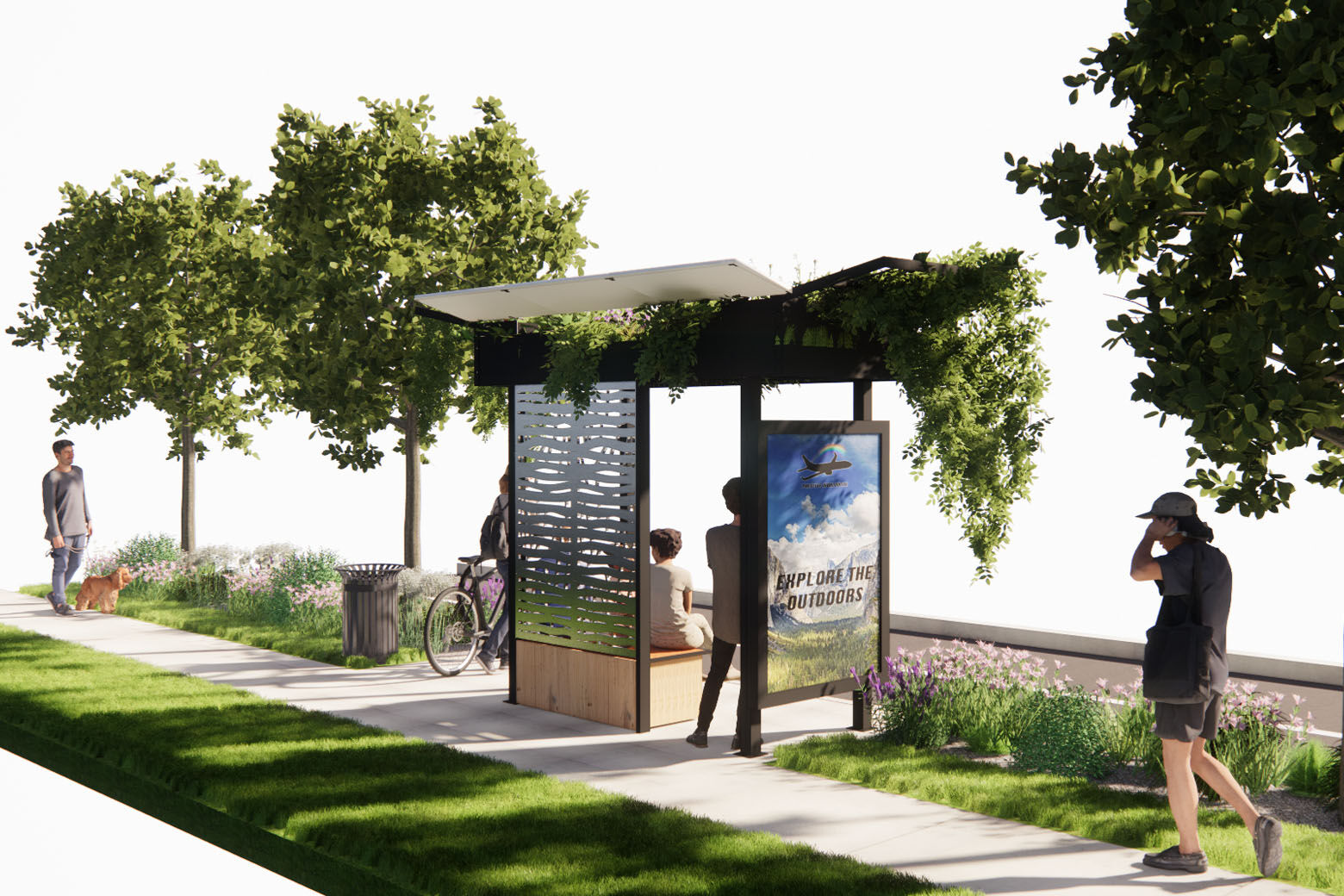
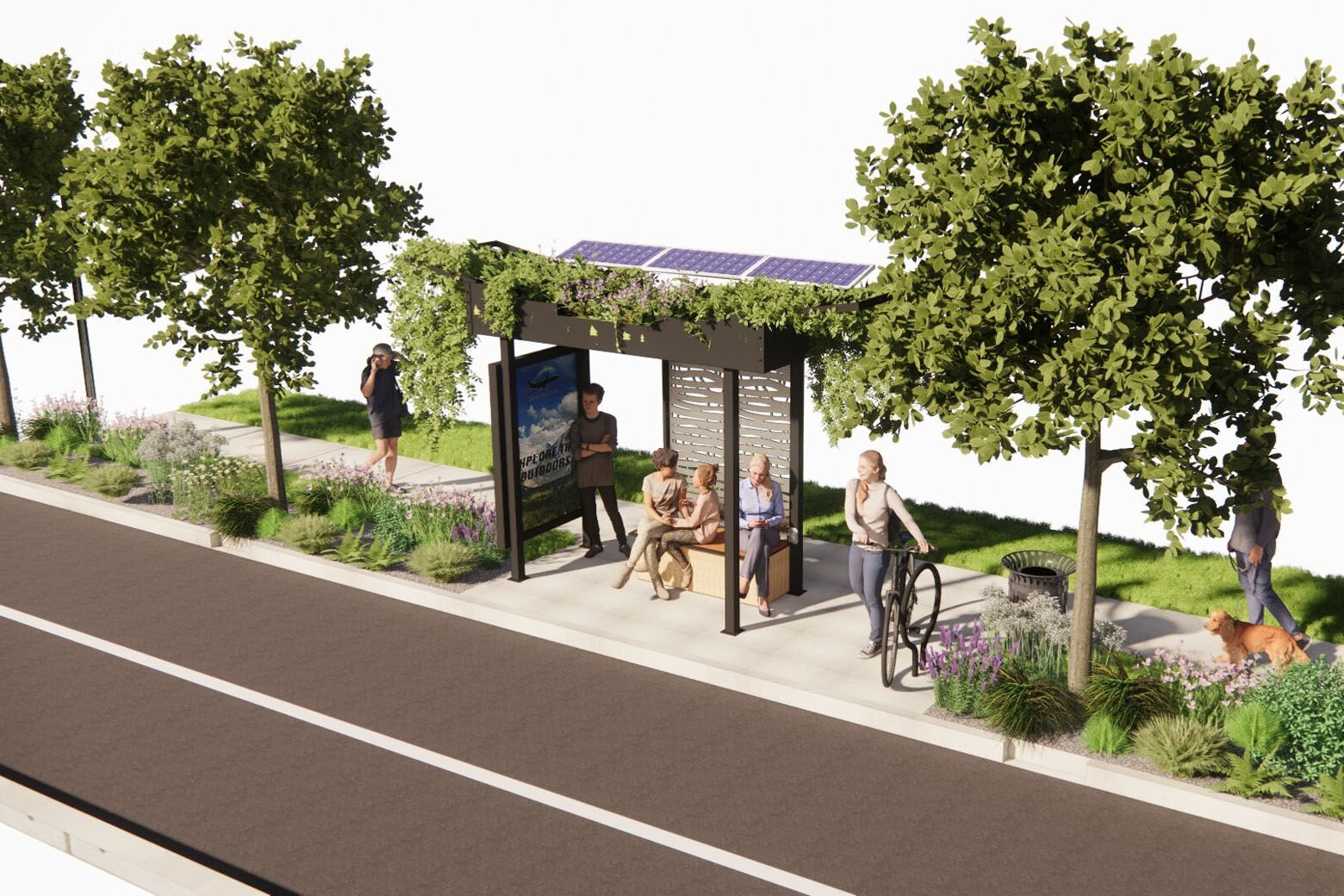
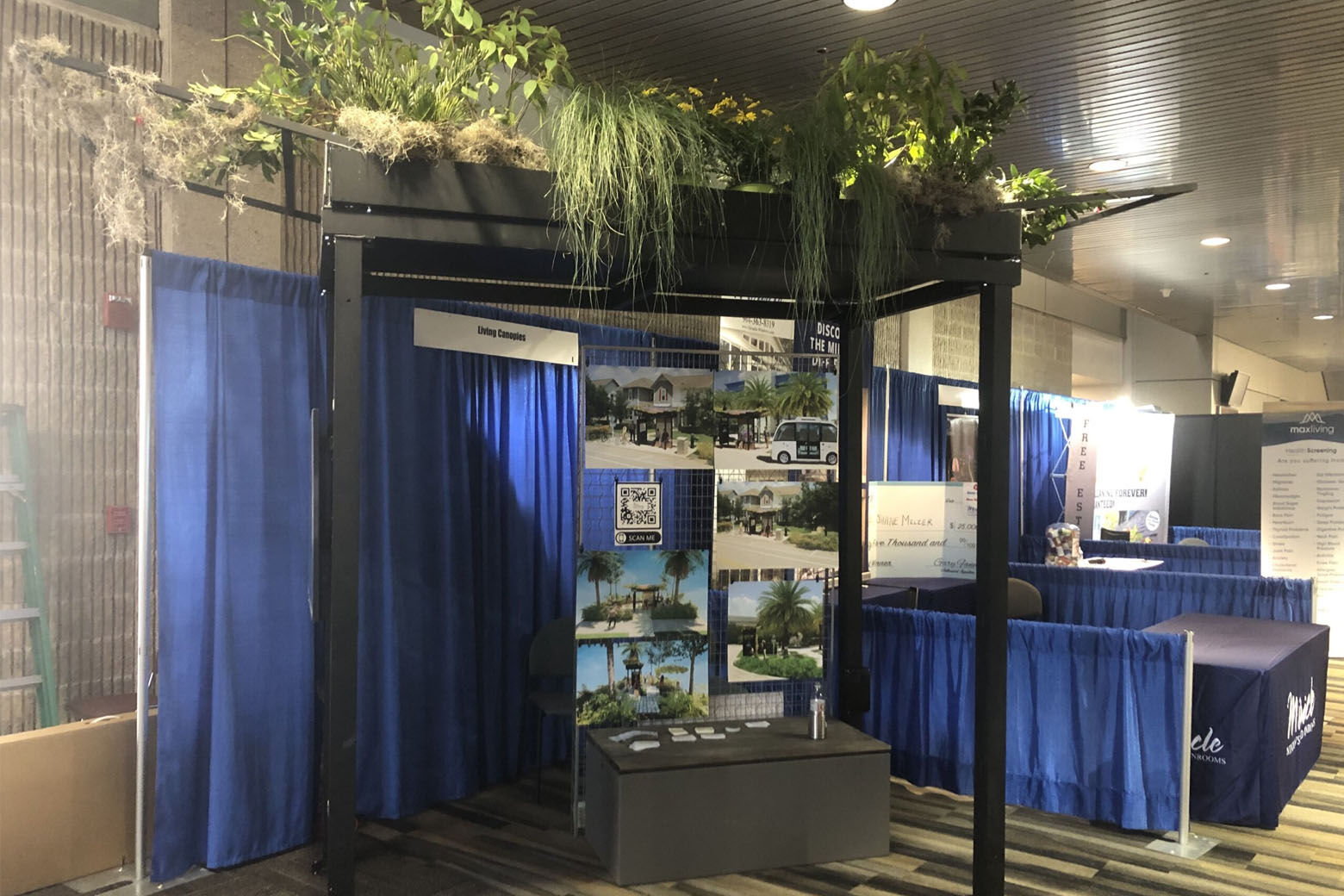
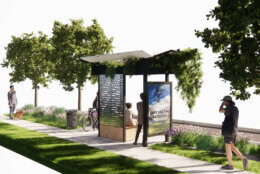
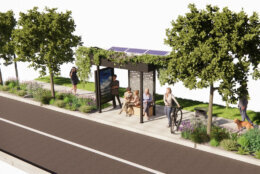
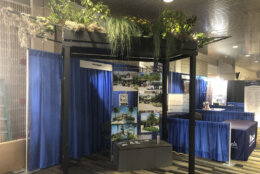
Most bus stops are boring, bland, barely hospitable, and when it’s hot out, you’re liable to roast at one of them, whether it’s covered or not. But a company started by a University of Maryland professor is trying to change that.
Living Canopies started as a maker of cooler, and greener, backyard patio umbrellas. And they still make those. But they’re also turning your typical bus shelter into something greener, usable, and at least in terms of temperature, also cooler.
“The normal bus shelters, they’re not much to look at, to be kind,” said Dave Tilley, an associate professor at the University of Maryland’s department of environmental science and technology.
He’s also the CEO of Living Canopies, which is the commercialized venture stemming from research out of his lab on campus.
The prototype of his shelter is similar in structure and size. But the roof has essentially what’s a raised garden bed filled with about 1 foot of soil.
“We plant that with native plants, grasses and forbs and small shrubs, and then on the ends you see our living canopies,” said Tilley. Those ends stick out almost like butterfly wings and are covered with vines. “On the backside of the roof is where we put the solar panels.”
The solar panels are oriented in such a way that when it rains, the water that hits the solar panel runs into the green roof, where it’s collected in a central drain and then sent down into a rain barrel that sits under the bench.
Under that bench is also where a pump and irrigation system operates, using the energy generated by the solar panels to send that storm water back into the vegetation above you, while also providing enough power to allow you to charge your cellphone or other electronics while waiting for the bus to arrive.
For the most part, it’s all self-sustaining, though someone will need to trim the vegetation back from time to time so it doesn’t become overgrown. Later this summer, you’ll see 10 of these bus shelters built in Hyattsville. Tilley is confident anyone waiting for a bus under one of his structures will be noticeably more comfortable.
“Having a vegetated canopy, or plants above your head, can easily make you feel 8 degrees cooler, if not more,” said Tilley. “Especially on a sunny day, so instead of it feeling like 95 degrees, it’s only going to feel 87 degrees, which is quite a big difference for a person.”
In all, they provide about 50 square feet of shaded coverage, which is more than a typical bus stop does.
“We feel like there’s a real need for more shelters, and why not make the ones that they have more beautiful and more friendly to the environment?” said Tilley. “It’s hopefully increasing ridership by encouraging people to wait at the bus stop for their buses. So increasing ridership reduces greenhouse gas emissions greatly.”


